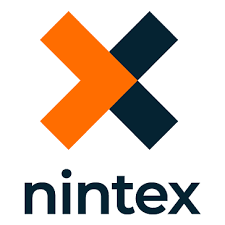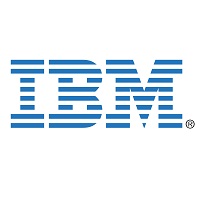What is business process management software?
Business process management software helps businesses map workflows, automate key processes, and streamline operations. It is a term used for software systems that model, map, and/or automate most or all of a business function or process. BPM software identifies and eliminates areas where bottlenecks occur, makes your day-to-day operations run smoother, and ensures that all of the people involved in your processes are being effective.
BPM software overlaps with other software verticals including
project management software,
professional services automation tools, and
salesforce automation systems. For example, a project-based business that uses a popular solution like
Wrike,
Mavenlink, or
LiquidPlanner can use their project management software to map out their entire workflow, building visualizations for key processes and making progress and problems more visible to the entire team. While BPM professionals will draw a distinction between a project and a process, companies can use some types of project management software to design repeatable projects.
Find your new business process management software
Best BPM software
Each of the software tools listed in this chart feature an excellent visual workflow chart that lets you map out your processes and easily change them with a drag-and-drop editor. Additionally, each vendor offers cloud-based BPM options, so you won’t have to free up server space to have it on-premise.
What are some key features of BPM software?
Each BPM software should at least have the below features included. Depending on your industry, you may care more about some additional features, but these are helpful no matter what industry you’re in.
Document management or sharing
While systems like Google Drive and
Dropbox have made document sharing less of a requirement within BPM software, everyone on a team needs access to the same documents for processes to be successful. The BPM you choose should at least integrate with these systems, so you can sync files and keep everyone on the same page.
Email integration
Your team members use email to contact suppliers, clients, and partners, which makes email integration an important part of your BPM software. Keeping approvals and important requirements in the same place as the process keeps you organized and ensures your process meets all the specifications.
Visual workflow map
Having a visual representation of your processes is important to making sure everyone understands them. Most BPM software includes a drag-and-drop editor that makes it easy to create and change processes as needed.
Cloud-based software
While you may elect for an on-premise option, cloud-based software ensures regular backups of your processes and data. Your on-premise server space is limited, so if you don’t absolutely need an on-premise BPM, you’re probably better off choosing a cloud-based option.
Mobile accessibility
As more work is done remotely and on the go, everyone on your team needs to be able to log into your BPM through their mobile device. Choosing a BPM software that offers mobile access will keep your projects moving along quicker and reduce any delays or downtime due to important people being unable to access the data.
What are the benefits of BPM software?
Business process management software provides a centralized space to manage your business’s processes and ensure efficiency among your employees and technologies. Some benefits you can expect from BPM software include:
- Reduced operating and training costs
- A more cohesive business strategy
- Scalable and manageable processes
- Easy to change processes as laws and regulations change
- Customizable process charts that fit your company’s needs
- Better understanding among team members of their role in the process
Reduced operating and training costs
By using a BPM, you can streamline and optimize business processes, creating less waste and fewer redundancies. You’ll be able to finish projects quicker and reduce the amount of resources you use. These systems can also increase the amount of work you can get done without hiring more people, saving on labor and training costs.
A more cohesive business strategy
Using a BPM system allows you to create clear business processes that work together towards your overarching business goals. When your IT and sales teams’ processes are leading towards the same goals, it’s easier to achieve them faster and with greater success. With clear processes in place, your team will have a better idea of what they’re working towards and can be more engaged in the process.
Scalable and manageable processes
BPM systems clearly lay out your processes and show you every aspect of your projects to ensure everything is running smoothly. When something isn’t working, it’s easier to spot where the holdup is, so you can get things running normally faster. Plus, as your business grows, you’ll be able to scale your processes and increase scope with little delay.
Easy to change processes as laws and regulations change
In heavily-regulated industries, rules and regulations are always changing, and your processes need to be able to change with them. BPM systems with a drag-and-drop editor for their visual workflow maps make it easy to change processes as necessary and ensure that all laws and regulations are being followed.
Customizable process charts that fit your company’s needs
Many BPM software options offer customizable process maps to help you completely outline your business’s procedures. Pre-made charts can often cause more issues because they don’t fit the way your company works, even if they seem like the easier option upfront.
Better understanding among team members of their role in the process
BPM software makes processes easy to see and understand for every member of your team. Because of this, things are less likely to fall through the cracks because each of your employees will know their roles and responsibilities in the process.
BPM software purchasing considerations for enterprises
In order for enterprise companies to remain profitable, they need to streamline processes wherever possible. With the rapid growth that many enterprise companies experience, they need to consider a BPM system that covers as many pieces of their business as possible because they won’t have as much time to focus on upgrades later.
Customization
Choosing a BPM software that offers customizable workflows will help these companies create the processes that meet their exact needs, rather than having to force a pre-made process to fit. To get all of the functionality your business needs, you might consider choosing a BPM system that caters to your specific industry, rather than a more generic one.
Customer support
Customer support is also going to be a key factor in success with the BPM software. Generally, large companies don’t have a lot of downtime before they start losing money, so choosing a BPM software with quality customer service is key to reducing any delays during implementation. Interact with a vendor’s customer support team before purchasing your BPM software.
Reliability
You’ll want to get a feel for how established the business is. If it’s a startup, make sure you talk with the people in charge and get to know the current state of the company before you decide to buy from them. References from other customers of the company can help with this.
BPM software for enterprises
BPM software purchasing considerations for SMBs
While small and medium companies may be running fewer processes than enterprise companies, getting those processes right is just as important. Choosing a BPM software with good customer service and customization options can help these companies define and streamline processes to become more efficient.
Scalability
Small and medium businesses should also ensure that the selected system is user-friendly for as many departments as possible, even though they may not necessarily need it to cover the whole business at purchase time. Choosing a BPM that your company can grow into can keep you from having to learn a whole new system as your company scales.
Budget
Budget is going to be more of a consideration for small and medium businesses, so choosing a more generic BPM software (i.e. one that isn’t industry specific) is going to be easier on the bank. While you may not get every piece of functionality you want, you’ll be able to do enough to optimize your workflow and increase your ROI. Alternatively, a lower cost might make you more willing to take a chance on a startup that offers more features than a more established business.
Cloud-based options
Because small and medium sized businesses likely have limited server space, they’ll want to choose a cloud-based BPM software. Not only will the upfront costs be cheaper than choosing an on-premise option, but they’ll also have regular data backups and better accessibility for their whole team.
BPM software for SMBs
 Intellect
Intellect WorkflowGen
WorkflowGen Flokzu
Flokzu Intellio
Intellio AgilePoint NX
AgilePoint NX Appian
Appian Nintex Workflow Automation
Nintex Workflow Automation IBM
IBM ProcessMaker
ProcessMaker

